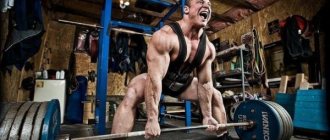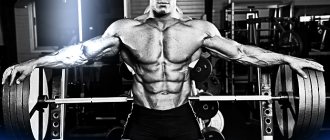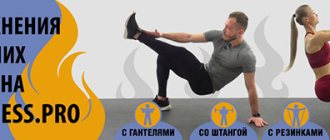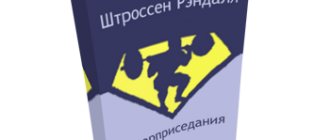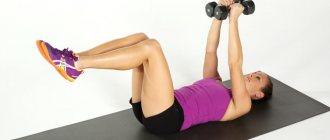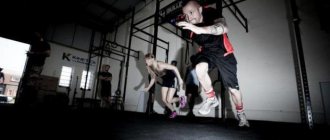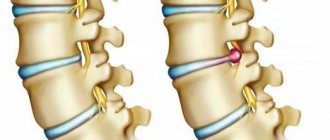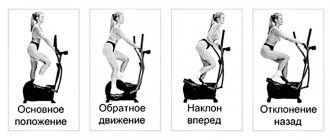Financial issue
Working out at the gym costs money. You need to pay for a subscription, a trainer, if a whole company has gathered, for renting a hall. With regular classes, the amount per month turns out to be considerable.
Workout classes work out muscles no worse than fitness classes, only for free.
It is enough to buy suitable clothes and shoes. There are no more costs. You can exercise every day.
Health
In workout you can find strength elements, exercise for wear, and the use of anabolic steroids, but less often than in bodybuilding.
For workout, the main thing is to have your own well-developed set of exercises, which develops muscles and improves health. The elements are aimed at developing the muscles of the chest, arms, and legs.
The main principles of lesson construction are:
- Warm up before performing the main complex. Its goal is to warm up the muscles and prepare them for the load.
- Execution of elements. Beginners start with simple exercises, advanced athletes perform more complex elements. The number of approaches and duration are adjusted individually depending on preparation and well-being.
- Stretching. The training ends only after performing special stretching exercises. This allows you to avoid injuries, muscle strain, and soreness.
Exercises done in the fresh air will make you feel better. Respiratory functions and heart function are normalized. It is only desirable that the workout area be located as far as possible from industrial zones and exhaust sites.
Everyone thinks that workout is just training on horizontal bars. This is wrong
Workout is a subculture that promotes training on outdoor sports grounds as a free and effective alternative to traditional fitness clubs and gyms. It is enough to look at those who have been training on horizontal bars and uneven bars for several years to be convinced that such training can give excellent results in terms of health, strength and beauty of the body. Many people think that on horizontal bars and parallel bars you can only do pull-ups, push-ups and pump up your abs. This is wrong. Using your imagination, you can come up with a huge number of different exercises and their combinations, which will not only increase the load in your workout, but also make it more interesting. Creativity is one of the key features of workout. This is clearly demonstrated in the video below.
The idea of workout goes far beyond the sports field. It consists of transforming the achievements obtained on the horizontal bars into achievements in real life. Many people told me how their introduction to workout changed them for the better, helped them get out of a difficult life situation or decide to seriously change their lives. For example, move to another city, take a new job, or enroll in a prestigious university.
Another component of our subculture is sociality, which is expressed in the principle “everyone teaches everyone.” We do not focus on ourselves, but, on the contrary, strive to share our experience with everyone. And we do it for free. Local communities based on street areas with horizontal bars now exist in many cities in Russia and in other countries.
beauty
Workout is the beauty of the body and movements. Experienced athletes perform exercises accurately, quickly, without hesitation. The elements in their execution seem light, attract the attention of others, and charge with energy. There is a desire to become as strong and beautiful.
They say that those who engage in street sports develop their muscles unevenly, with their arms and chest becoming more developed than their legs - this is not true. Only if the athlete concentrates on push-ups and pull-ups, forgetting about leg training exercises.
It’s worth remembering a few elements and it will become clear that the workout’s accusations of ignoring the work of the leg muscles are groundless:
- Hanging on your feet on a bar while lifting your body. Hips work.
- Squats. The load is on the entire leg.
- Lifting on your toes. A person stands on a step and, leaning only on his toes, rises and falls only due to the strength of his legs. This exercise is great for training your calf muscles.
For additional training, you can run or bike to the site.
Workout. Training principles
Before starting the practical part, we must understand the principles of workout training. Without understanding the principles of street training, the effectiveness of the best training schemes is reduced to zero.
Street Workout consists of the following training principles:
The principle of gradualism
7 out of 10 athletes quit workouts in the first year of training. The vast majority of them give up training in the first 3-4 weeks. The problem is overtraining, which beginners get by training too hard. The desire to achieve everything at once leads to the fact that the body does not have time to cope with new stress. The level of cortisol (stress hormone) increases, not only the body begins to hurt, but also the psyche, which suffers due to the high level of stress hormones. No amount of willpower helps. An enthusiastic athlete who started workout training incorrectly will increase his cortisol to the highest possible values and quit training.
We start with a simple, light load that does not lead to excessive discomfort. The initial load may be less than what you can do in your first workout.
Example: This is what your first workout might look like:
| Exercise | Approaches | Repetitions | Rest between sets in minutes | Rest between exercises in minutes |
| Pull-ups | 5 | 10 | 1,5 | 4 |
| Dips | 5 | 12 | 1,5 | 4 |
| Squats | 5 | 40 | 1 | — |
After this workout, your muscles will hurt for a week. The muscles and nervous system will experience excessive discomfort. It will be ingrained in the subconscious that workout training is very difficult and painful.
So we start with the following diagram:
| Exercise | Approaches | Repetitions | Rest between sets in minutes | Rest between exercises in minutes |
| Pull-ups | 3 | 5 | 1,5 | 4 |
| Dips | 3 | 5 | 1,5 | 4 |
| Squats | 3 | 15 | 1 | — |
After this workout, your muscles will hurt for 1-2 days. On the third day you can return to training.
Smoothly, without excessive discomfort, begin your workout workout. Only such a start will ensure results in the medium and long term.
The principle of load progression
The key principle that must be followed to achieve results in the shortest possible time is the principle of load progression.
Training is a stress factor that is necessary for muscle growth and improvement of any performance. The body, finding itself in a hole after a workout, is restored to pre-workout levels, after which it creates a reserve in case of a recurrence of similar stress.
Increasing reserves allows you to increase the load in the next workout. Then we recover, create a new reserve for a new level of stress and increase the load again. And so on ad infinitum.
The principle of load progression is an integral part of any strength training!
This small paragraph is much more important than any particulars of a workout workout.
The principle of progression of loads in workout may look like this:
Crossfit. Program for beginners. Workout #1
| Exercise | Approaches | Repetitions | Rest between sets in minutes | Rest between exercises in minutes |
| Pull-ups | 3 | 5 | 1,5 | 4 |
| Dips | 3 | 5 | 1,5 | 4 |
| Squats | 3 | 15 | 1 | — |
Crossfit. Program for beginners. Workout #2
| Exercise | Approaches | Repetitions | Rest between sets in minutes | Rest between exercises in minutes |
| Pull-ups | 3 | 7 | 1,5 | 4 |
| Dips | 3 | 7 | 1,5 | 4 |
| Squats | 3 | 18 | 1 | — |
Crossfit. Program for beginners. Workout #3
| Exercise | Approaches | Repetitions | Rest between sets in minutes | Rest between exercises in minutes |
| Pull-ups | 3 | 8 | 1,5 | 4 |
| Dips | 3 | 8 | 1,5 | 4 |
| Squats | 3 | 21 | 1 | — |
Crossfit. Program for beginners. Workout #4
| Exercise | Approaches | Repetitions | Rest between sets in minutes | Rest between exercises in minutes |
| Pull-ups | 3 | 10 | 1,5 | 4 |
| Dips | 3 | 10 | 1,5 | 4 |
| Squats | 3 | 24 | 1 | — |
Crossfit. Program for beginners. Workout #5
| Exercise | Approaches | Repetitions | Rest between sets in minutes | Rest between exercises in minutes |
| Pull-ups | 4 | 10 | 1,5 | 4 |
| Dips | 4 | 10 | 1,5 | 4 |
| Squats | 4 | 25 | 1 | — |
Crossfit. Program for beginners. Workout #6
| Exercise | Approaches | Repetitions | Rest between sets in minutes | Rest between exercises in minutes |
| Pull-ups | 5 | 10 | 1,5 | 4 |
| Dips | 5 | 10 | 1,5 | 4 |
| Squats | 5 | 25 | 1 | — |
Crossfit. Program for beginners. Workout #7
| Exercise | Approaches | Repetitions | Rest between sets in minutes | Rest between exercises in minutes |
| Pull-ups | 5 | 11 | 1,5 | 4 |
| Dips | 5 | 11 | 1,5 | 4 |
| Squats | 5 | 28 | 1 | — |
Crossfit. Program for beginners. Workout #8
| Exercise | Approaches | Repetitions | Rest between sets in minutes | Rest between exercises in minutes |
| Pull-ups | 5 | 12 | 1,5 | 4 |
| Dips | 5 | 12 | 1,5 | 4 |
| Squats | 5 | 30 | 1 | — |
Crossfit. Program for beginners. Workout #9
| Exercise | Approaches | Repetitions | Rest between sets in minutes | Rest between exercises in minutes |
| Pull-ups | 6 | 12 | 1,5 | 4 |
| Dips | 6 | 12 | 1,5 | 4 |
| Squats | 6 | 32 | 1 | — |
Crossfit. Program for beginners. Workout #10
| Exercise | Approaches | Repetitions | Rest between sets in minutes | Rest between exercises in minutes |
| Pull-ups | 6 | 13 | 1,5 | 4 |
| Dips | 6 | 13 | 1,5 | 4 |
| Squats | 6 | 35 | 1 | — |
Over 10 workouts, we increased the number of approaches by 2 times, repetitions by more than 2 times. The physical capabilities of the body have increased significantly, muscle mass has increased.
For comparison, let’s show the unsystematic training of an average beginner:
Crossfit. Program for beginners. Workouts No. 1-3
| Exercise | Approaches | Repetitions | Rest between sets in minutes | Rest between exercises in minutes |
| Pull-ups | 3 | 5 | 1,5 | 4 |
| Dips | 3 | 5 | 1,5 | 4 |
| Squats | 3 | 15 | 1 | — |
Crossfit. Program for beginners. Workouts No. 5-8
| Exercise | Approaches | Repetitions | Rest between sets in minutes | Rest between exercises in minutes |
| Pull-ups | 3 | 6 | 1,5 | 4 |
| Push ups | 3 | 9 | 1,5 | 4 |
| Squats | 3 | 16 | 1 | — |
Crossfit. Program for beginners. Workouts No. 20-22
| Exercise | Approaches | Repetitions | Rest between sets in minutes | Rest between exercises in minutes |
| Pull-ups | 3 | 8 | 1,5 | 4 |
| Dips | 3 | 8 | 1,5 | 4 |
| Squats | 3 | 20 | 1 | — |
Progress is minimal or non-existent. The principle of load progression is neglected. There is no result.
It is not necessary to increase the load every workout. The frequency of load increase depends on:
- Experience. The longer an athlete trains, the greater the load, the less frequently the load needs to be increased.
- Work of the hormonal and nervous systems. Lack of hormones or central nervous system capacity leads to the body's inability to create reserves.
- Age. The younger you are, the easier it is to progress.
- Quality of restoration. Nutrition, sleep and the use of recovery mechanisms relate to this point.
- Training program.
Supercompensation principle
Compliance with the principle of load progression becomes more difficult without understanding the principle of supercompensation.
The training cycle is divided into the following phases:
- Traumatization. Training. Muscles are stressed and microtraumas appear. The hormonal system and central nervous system are subject to stress. During training, muscles and strength indicators do not grow! There is no point in exercising every day.
- Recovery. Starts after completion of training. The body gradually returns to its pre-workout state. The muscles, central nervous system and hormonal system are restored to pre-workout levels (!). During the recovery phase, training is not only pointless, but also detrimental to the athlete's progress.
- Supercompensation. The stage where the necessary reserve is created. Training is effective only in the supercompensation phase! The muscles were restored and increased beyond the pre-workout level. Only here will we be comfortable going beyond the limits of the previous training.
- Loss of super compensation. Occurs if the athlete missed the supercompensation phase. The body returns to pre-workout levels. The problem is typical for athletes who train too infrequently.
More information about what training looks like in different phases of the training process can be found here.
The pleasure principle
The principle of any workout workout is that working on your body should be fun. If there is no pleasure, the athlete is making a mistake in some way.
The following rules will help you follow the principle of pleasure in the training process:
- Pleasure may not appear from the first workouts. More often - after 1-2 months of regular training. It's difficult to immediately enjoy workouts that leave your body in extreme discomfort. If you are far from sports, then in the first few weeks there will be more discomfort than pleasure. The pleasure-discomfort ratio will change. Over time, the pleasure will become so overwhelming that the discomfort will no longer be noticed.
- Don't overload yourself in training, don't work to failure in every approach. Acceptable is 3-5 failures during the entire training session. Failure training wears out the nervous and hormonal systems. Effective only for athletes who use anabolic steroids.
- Follow the principle of supercompensation. The pleasure of workout cannot be achieved through training in the recovery phase, which wears out the body and psyche.
- After training, the athlete should be tired, but not on the verge of death. If after a good workout you cannot recover within 60 minutes, the load is too great, it causes more discomfort than pleasure.
- Do not train when physically or mentally worn out. Example: you are simultaneously faced with many problems in your family and at work. If these problems are not too significant psychologically, training can relieve the psyche. If too much energy is spent on solving problems, and the thought of training makes you feel nauseous, physical activity will only make matters worse.
- Love the process. We strive for results, for a “tick”, but without love for the training process, without sympathy for what you do, it will not be possible to get this “tick”.
To be better
Despite the fact that workout is not recognized as an official sport, today there are communities of athletes who share new elements, the features of their implementation, and organize competitions.
Workout categories have already been developed, the highest of which is to be a god in street sports. The competitive effect contributes to the further development of interest in workout and new achievements.
When there are people around who support and help, it becomes easier to set new goals and achieve them.
Workout today is an opportunity to become beautiful, healthy, confident, make friends, and all this without financial costs. All you have to do is go outside and start exercising.
THESE ARTICLES WILL HELP YOU LOSE WEIGHT
Your feedback on the article:
( 678 ratings, average: 4.53 out of 5)

